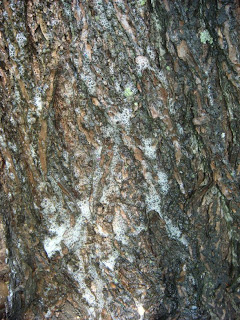The Queen and the Dutchman’s Breeches – A Royal Affair
By Lisa Liotta
 |
| Dutchman's Breeches. Photo by Lisa Liotta |
Dutchman’s Breeches grow along limestone ledges in moist, well-drained soil. Feathery sage-green leaves grow in low mounds about 6” high. Flower stalks rise 6-12” above the ground which droop gracefully and dangle several beautiful, creamy white flowers that look like pants (breeches) hanging upside down on a clothesline. The bottom of each flower is yellow which will attract bees, especially bumblebee queens,
who play a royal role as we shall see!
Dutchman’s Breeches, like other spring ephemeral
wildflowers, are perennial plants.This
means that the plant re-grows year after year from the same roots which remain
alive underground. All in one growing
season, perennials grow from the ground, produce flowers (and hopefully seeds)
and also capture enough of the sun’s light to convert it into stored energy
that will enable the plant to regrow the following spring, before they die back
to the ground.
New Dutchman’s Breeches plants only grow from seeds – that
is, IF the plant produces seeds! Flowers
produce seeds only when pollination occurs. Flowers generally can be pollinated by wind, birds, insects, butterflies
or bees. However, Dutchman’s Breeches
are
only pollinated by just one very special royal visitor: a bumblebee queen.
Can’t just ANY common insect pollinate the flower? What’s so
special that makes this flower a royal feast fit only for Her Majesty?
Insects have a special long hairy tongue (called a proboscis)
that they use like a straw to bring nectar from flowers into their mouth. Only bumblebees have a proboscis long enough
to reach the nectar deep inside the flower through the bottom opening; the
tongues of honeybees and other insects are too short.
 |
| Photo by Lisa Liotta |
When a bumblebee drinks the nectar of this flower, it also pollinates the flower with its head and front legs which cause the flower to produce a seed. Only bumblebees have legs strong enough to pull apart the petals of the Dutchman’s Breeches and get inside the pants. Butterflies and other insects don’t have legs that are strong enough.
Let me digress, and introduce you to a new word:
Phenology. Phenology is the study of how climate influences the regular cycles of plants and animals. For example, flowers may bloom earlier or later from year to year if there are changes in the snow cover, snow melt, temperature, rainfall, and many, many other events. When things more or less remain the same, flowers bloom fairly consistently at the same time from year to year. When the climate changes, it affects how and when things grow. This year, the flowers are noticeably blooming a few weeks later than last year.
Phenology. Phenology is the study of how climate influences the regular cycles of plants and animals. For example, flowers may bloom earlier or later from year to year if there are changes in the snow cover, snow melt, temperature, rainfall, and many, many other events. When things more or less remain the same, flowers bloom fairly consistently at the same time from year to year. When the climate changes, it affects how and when things grow. This year, the flowers are noticeably blooming a few weeks later than last year.
Now, let’s meet the queen....
HER story really begins the summer of last year, when a
colony makes a new queen. In late summer,
the new queen leaves the nest, mates, then gorges herself on pollen and nectar
to store up energy to last her through the winter. In the fall, all the other bees in the colony
die (including the old queen), but the new queen goes underground and
hibernates all alone. The only bumblebee that survives the winter is a new
queen.
When she emerges in the spring, she searches out many kinds
of early spring flowers and drinks their nectar to regain her energy. Then, she finds a suitable nest site near her
food source and collects pollen and nectar (fertilizing flowers in the process). She builds her nest and lays the eggs that
she has been carrying all winter. By the time the eggs turn into larvae and
then bumblebees, the spring ephemeral wildflowers including Dutchman’s
Breeches, are gone. In late summer the colony will make new queens, and the
cycle continues.
Bumblebee queens, like Dutchman’s Breeches, also emerge in the spring based on many climate factors, which may be completely different than those for Dutchman’s Breeches. In normal years, bumblebee queens emerge within just a few days of when these flowers bloom, and their royal affair continues.
Let’s hope that our climate doesn't change so much that they miss the dates for their annual rendezvous.

.jpg)
.jpg)
Great article, Lisa. I knew you would make a wonderful writer. love you, Mom
ReplyDelete